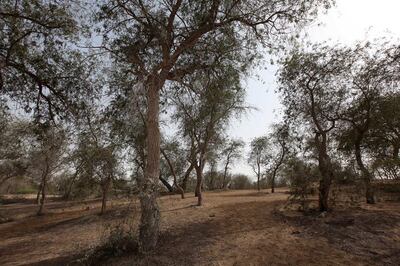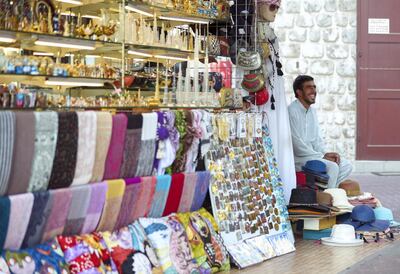One of the most common criticisms levelled at Dubai is that it is superficial, or one-dimensional.
This is a relic from a time when perceptions of the city honed in on its mammoth malls, fancy restaurants, expensive cars and over-indulgent brunches, and refused to weave any of the city's other traits into that threadbare tapestry. And so Dubai was cast as a one-dimensional caricature: the ambitious, oil-rich metropolis where everyone drove a Lambo' and lived a lavish lifestyle.
There's that saying: "If you're bored, you're boring". Building on that premise, I'd suggest that: "If you think Dubai is lacking in breadth, it may be you who has a blinkered view."
Yes, of course some of the cliches are true. There are mammoth malls and fancy restaurants and expensive cars and over-indulgent brunches. Lots of them. But that's just one aspect of this multi-faceted city. I would hazard a guess that many of the people in the Dubai-is-so-superficial brigade have not spent much time riding horses across Mushrif Park, watching the flamingoes at Al Qudra Lakes, paddle boarding around the Burj Al Arab, haggling over a fresh catch at the Jumeirah Fishing Harbour, or wandering the streets of Bur Dubai.

This is a pastime that brings me particular joy. When I first moved to the UAE, the company I worked for put me up in a grotty serviced apartment on the edge of Bur Dubai. Anecdotally, it smelled like a mix of wet paint and butter chicken, which, I can confirm, is not a classic pairing. It did mean, however, that my very first experiences of Dubai life were the noisy, crowded, colourful streets of this entirely unfashionable but inordinately charming corner of the city. It was, and is, everything that "new Dubai" is not, and stands as proof that there is more to the city than meets the eye.
In the alleys of the Al Fahidi Historical Neighbourhood, art galleries hint at a creative scene that predates the trendier Al Serkal Avenue and Dubai Design District. It also offers a glimpse into old Emirati homes, replete with interior courtyards and statuesque wind towers. There is the wonderfully anachronistic Dubai Museum, which, last I checked, presented insight into the emirates' recent past, along with some truly terrible taxidermy. Just around the corner, a mosque sits directly across from Hindu temples dedicated to Shiva and Krishna, which are flanked by tiny shopfronts selling garlands of marigolds. In time-honoured tradition, the Bur Dubai souq throngs with entrepreneurial individuals who address any woman with blonde highlights as "Shakira".

Food connoisseurs know that they must head to Al Ustad, a Dubai icon that has been serving its "special kebabs" for the last four decades. It's interior is an intriguing combination of design styles - statement pieces include clocks (lots and lots of clocks, each telling a different time, for no reason that I can discern); first day covers featuring stamps from the GCC; bank notes from all around the world; and hundreds and hundreds of pictures of happy customers (including one of Sheikh Hamdan bin Mohammed Al Maktoum, the Crown Prince of Dubai). Like all the best restaurants in town, there are strict seating policies - the lunch shift lasts from 12 to 4 and there's a cordoned-off seating area for families. On our last visit, we paid exactly Dh75.60, including VAT, for succulent lamb kebabs perched atop mountains of rice, served with soup and soft drinks (including a wonderfully archaic Canada Dry cream soda).
For me, a trip to Bur Dubai invariably ends up on the shores of the creek. That's the original one, where it all started, not the 2.0 canal version. A table at Beyt Al Wakil offers a a ringside view of the waterway: enormous dhows laden with goods meander past as tiny abras weave around them, shuttling residents from one bank to the other. I like to imagine that it's a scene that has changed little since Dubai first came into existence. The smell of diesel hangs in the air and gulls swoop overhead. "Shakira, Shakira," whisper the smiling salesmen as the try to sell their shawls, trinkets and knock-off handbags.
A trip to Bur Dubai will tell you that this city is many things. Imperfect, maybe. At times alien and infuriating? Colourful, chaotic and charming? Yup. But one-dimensional? Definitely not.
_________________
Read more from Selina:
[ Why ageing in Dubai is a particularly painful process ]
Maybe the sisterhood does exist, after all
How design can make or break a UAE restaurant
_________________






